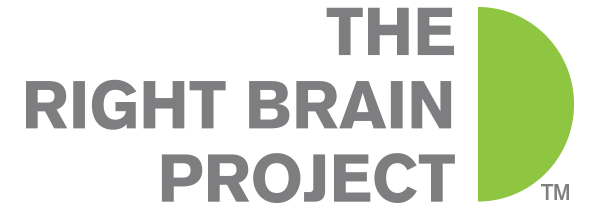by Julian Ryder, Founder + Chief Creative Officer
Your brain is fully connected. And although each side of your brain does have some specific attributes: the right side of your brain is imaginative, artistic and visual, while the left side is logical, analytical and linear. The fact is, it takes both hemispheres of your brain to keep your New Year’s resolution or to perform any other task for that matter. Since we’re all about being creative, let’s look at how an alternate approach to your New Year’s resolution can get you to a newly imagined future.
First a few statistics
About 45% of Americans make a New Year’s resolution; only 8% are able to keep them. After only one week, 25% of the people give up. The good news is people who declare their resolution to others are 10 times more likely to reach their goals than those who keep it to themselves. Verbally declaring your goal to others increases the possibility of making it a reality. Sources: University of Scranton. Journal of Clinical Psychology
1. Create a resolution that's possible to keep
“My New Year’s Resolution is to run a marathon in three months,” If you’re not a runner, it would be wise to stop and ask yourself; “Is this really possible?” Before you jump in, do research, learn what it will take for you to reach your goal. You may be surprised, and it could save you from making a bad choice.
On the other hand making a New Year’s resolution that doesn’t ask you to stretch and requires no creativity isn’t worth your time. Move on; choose something that offers more of a challenge. A word about dragging last years broken resolutions into this year – Don’t.
2. Clearly define your New Year’s resolution
Saying “My New Year’s resolution is to enjoy life to the fullest” is wimpy, it has no meat on the bones, no power. Instead of leaving it up for interpretation, state your resolution with precision using details and specifics.
For example: “My New Year’s resolution is to take three vacations this year to Hawaii, New York and Colorado. I will eat at great restaurants and stay in luxurious hotels. When not traveling, I will entertain friends twice a month and attend six plays and concerts.” The more specific you are the more likely you will achieve your goals.
3. Create a support team
You and I know people who we have an unspoken agreement that says; “I won’t call you on your stuff if you don’t call me on mine.” Don’t pick them to be part of your support team. Choose the right people. Ask people you can count on, the one’s that will let you know when you have food stuck in your teeth, or when your integrity is lagging. Choose people that would expect you to do the same for them.
4. CREATE A plan
The plan should have a start date (The beginning of the year) and a completion date. It should include key milestones to keep you in action and to show you what you’ve accomplished as you move through the year. Keep in mind your plan is a living roadmap to success and you need to allow for changes to occur
How to create a plan
- Buy a wall calendar with room to write in the boxes
- Go to the completion date you chose for your New Year's resolution
- Write your resolution on that date along with the word “Complete”
- Going backward to the beginning of the calendar write in your milestones (what you need to accomplish by this date to reach your goal)
- Repeat going back in time until you’ve reached the beginning of the year
Congratulations! You’ve just created the future
5. Shift your perspective
If you really want to step up to the plate and be creative with your New Year’s Resolution replace the word “Resolution” with the word “Promise” – New Year’s Promise.
At The Right Brain Project we understand a promise to be a verbal contract—as binding as a written contract. It’s a declaration that says “I will cause something to occur in the future.” A promise shifts your perspective and requires you to be more rigorous with yourself. To further increase your chances of success share your New Year’s Promise with others as we said above. This makes it very real in the world. Include these people on your support team and ask them to hold you to your promise – no matter what!
If your Promise is big and adventurous, there’s a good chance you will hit some unexpected road blocks, see them as an opportunity to exercise your creative muscle (your brain) and commit to finding an acceptable solution.
Creativity and creative problem solving are skills that take practice. Consistent practice leads to results.

